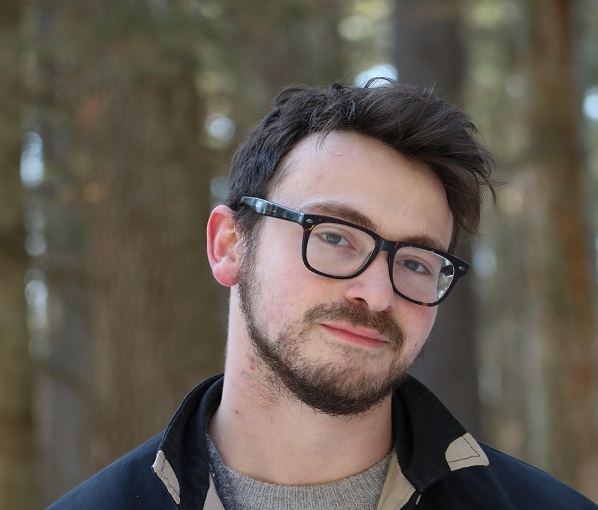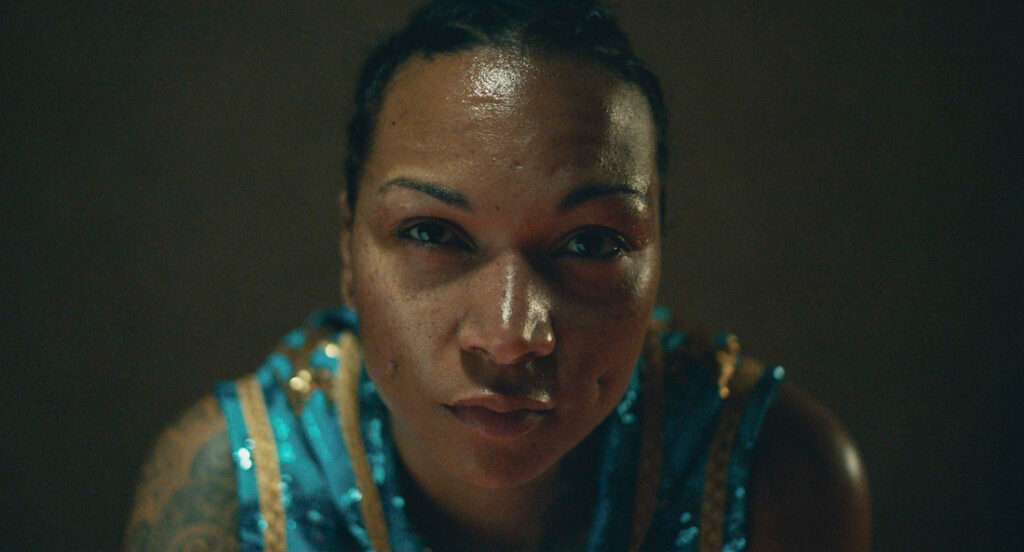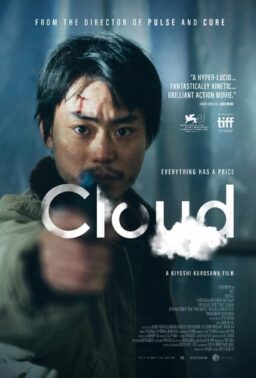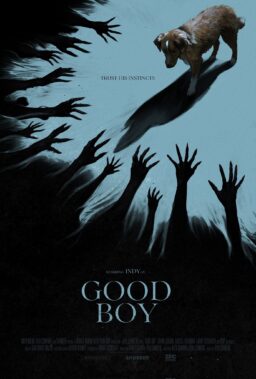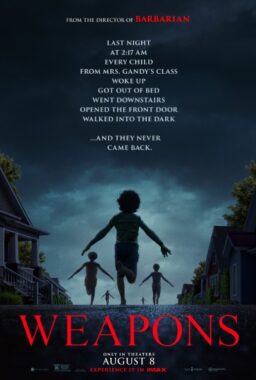In “Catch the Fair One,” Native boxing champ Kali Reis delivers a powerhouse performance just as hard-hitting as you’d expect from a career athlete whose nickname is K.O., as in knockout.
At the center of Josef Kubota Wladyka’s absorbing vigilante thriller, out this week in select theaters and on digital platforms/VOD, Reis plays a boxer who infiltrates a human trafficking operation in order to track down and punish those responsible for her sister’s disappearance. Reis—who is half-Native and half-Cape Verdean, descending from Cherokee, Nipmuc and Seaconke Wampanoag tribes—collaborated with Wladyka on the script, which was informed by her advocacy on behalf of Indigenous peoples’ rights.
Highlighting the on-going epidemic of missing and murdered Indigenous women (MMIW), “Catch the Fair One” examines the fallout of one girl’s abduction on Reis’ fighter, Kaylee “K.O.” Uppashaw. Mired in pain, regret, and loss since teenage Weeta (Mainaku Borrero) vanished off the street, Kaylee hasn’t been in the ring for some time, but she’s still training: sparring with much larger men, sleeping at the local women’s shelter with a razor blade in her mouth.
The authorities have proved predictably useless, and so Kaylee decides to trace her sister’s footsteps herself, breaching the local criminal underworld then working her way up its chain of command with ferocious purpose. As “Catch the Fair One” plunges Kaylee into the fight of her life, Wladyka’s suspenseful direction holds the audience close to the ensuing carnage—and depicts its body count with ice-cold clarity.
Making her acting debut, Reis supplies the kind of core magnetism such a tough, tense thriller demands; she’s nominated for an Independent Spirit Award, with this year’s winners set to be announced in early March. “Catch the Fair One” first premiered at Tribeca and has enjoyed a successful festival run since, including a screening at the Chicago Critics Film Festival last fall. With the film finally out more widely this week, the Providence-born fighter sat for an interview about acting, activism, and the dark reality of a national crisis.
How did this project first take shape for you?
This has been almost a five-year process. Josef originally reached out to me via Instagram; he slid into my DMs. He was already an established director, from “The Walking Dead” and “Narcos,” he already had a feature film out, [2014’s “Manos Sucias,”] and he introduced himself. I was established as a professional fighter. He told me who he was and said, “I have this script. Are you interested in acting?”
I had always been interested in acting but didn’t know where to start. Josef reached out to me, and he eventually came up to Rhode Island; we just sat down and talked. He’d had an idea of the story, as he was finding out about [the crisis of] missing and murdered Indigenous women (MMIW), of which the general population has no clue. He ran across my profile through a mutual friend that owns a boxing gym in New York, and he was drawn to the fact that I do my best to bring awareness to various Native problems, such as MMIW. I read the script, and we just started from there.
He asked me to jump on as a collaborative, creative partner. He got to know me and sat down with some elders of my tribe. We just started sharing ideas back and forth about the characters, building the story, and what themes that we wanted to come across. From the beginning, his approach was that he knew it wasn’t really his story to tell and wanted to tell it the right way. It’s such a sensitive subject, not just to Indigenous women but to Indigenous people in general. Sex trafficking in the community—and in general, non-Indigenous—is a huge problem, and it has been for a long time, but it especially is [a crisis] for Indigenous women.
We didn’t want to sexualize it or put what was happening [to victims] on screen in an obvious way. We wanted more to suggest, as we already know what’s going on and what this is about. Josef was very sensitive about that; that’s how he is, because he’s very cautious and he wants to tell things right. We wanted to drop the audience in the middle of this world, tell the story, and rip them out as fast as we could. It was more or less “suggest but don’t show.” We were also teeter-tottering around, “Is it too dark, or is it not dark enough?” And every time we circled back around on that, I had to remind them, “Listen: this isn’t dark enough, but we’ll stay balanced on this line to get the point across.” This film tells a fictional story, but it’s very real to a lot of different families. It could have gone darker.
“Catch the Fair One” is so impactful in part because of how it’s filmed: close-up and personal, claustrophobically so. Tell me about acting in scenes and how that shooting style influenced your performance.
Early on, we understood that Kaylee was going to carry this entire journey on her back, so the audience could see her perspective. We wanted the audience close to her, close to how she was feeling: the rage, anger, revenge, sadness, emptiness, loneliness, even down to the colors depicted in the film. I knew you could probably write down as many things as she actually says on one piece of paper. Josef explained to me that it was going to have to rely on my physicality. I can say these lines, but the audience has to feel it in the silences, to still know exactly what she’s thinking. And I got that immediately. I’m a huge people watcher, and I always have been, so that was something that helped me to make the audience feel so close and enclosed in her world.

On a performance level, how did your boxing background prepare you for this?
It’s to do with the ability to have multiple coaches and have an outside critique, because boxing is not a team sport. I’m in there, and I have my corner, I have to really trust my corner to see what I don’t see. It’s like being in front of the camera, where I don’t know what the director and everybody else are seeing. I need that critique: “What can I do better?” I’m able to take constructive criticism in boxing, because I’ve had the pickiest coaches on Earth. They demand perfection, and I want perfection for myself. I’m so hard on myself, sometimes too much. I had the ability to bring that to film—not self sabotage, like, “I’m so bad,” but more like, “Okay, I know they’re telling me to fix this, so how can I be better?” I count on multiple eyes, not just what I see. There are a lot of parallels to boxing, down to how agents are like promoters and managers are still managers. There’s a whole crew that makes this happen. It’s not just on the fighter; there are so many moving parts to boxing, just as there are so many moving parts to making a movie.
I wanted to ask about the psychological journey Kaylee goes on with violence in this film. She wins fights professionally, but there’s no triumph in the violence she inflicts here. It’s painful and destructive.
We made Kaylee a boxer and such a strong character, a warrior who can win fights, because she’s not going to win this fight. This is way bigger than her. But she’s going to do whatever she has to, just to find her sister and find answers. We wanted the audience to start questioning whether she is going too far. She is not just an average sister; she’s a professional fighter. That’s what she does. And even she can’t take down this enormous corporation of evil. It’s going to take more than somebody who’s strong like that to take this down, though she is going to try, by any means necessary.
How far would you go, if this was your little sister? How far would you go, if this was your daughter? That’s the theme, because this crisis is not addressed by mainstream media. Native people know what goes on in Native country. We’re starting to see more [activism] based around missing and murdered Indigenous women, especially around pipelines and especially with residential school children being found and uncovered from hundreds of years ago, no one having known where they were. But we couldn’t give this story a happy ending, because the reality is that there are really no happy endings for these families. There are thousands and thousands of families that still haven’t found their loved ones, who have no answers. Nobody knows who’s doing this, or they find who is doing it but their loved ones are already gone.
So much of that is carried by your performance in the film, which is seismic. Playing Kaylee, who carries this much anger and psychic pain, how did you commit to that while protecting yourself, if you did, from the agony of those emotions?
Especially with this being my first movie ever, to take on such a heavy role that was so close to me—because I am Indigenous, I am Cape Verdean, and my name is Kali—it was very, very close. And it was actually such a cathartic ride, shooting and writing and getting prepared for this, because just as I approach my boxing—as fighting for all nations, fighting for my people—I felt that I had to do this.
To separate myself from Kaylee, I had to stay strong and stay grounded to who I really am. It was tough but, because it’s so important for this story to get out, it was necessary. I was able to pull myself back and say, “Okay, that was her, this is me.” I was very vulnerable and shared all my emotions through this character. I know those feelings. Everybody knows feelings of sadness, anger, rage, and happiness. That has no prejudice, no matter what you are: white, Black, or in-between. It was helping me develop my tools as an actress throughout the film, being able to let this out. If somebody who’s watching this has those same feelings of rage and anger, for the same subject, I understand. This character understands.
I had been planning to ask you about the most difficult scene you shot for “Catch the Fair One,” but given what you’re saying, which was the most cathartic?
There’s one scene, with Kaylee and her mother (Kimberly Guerrero), that was very cathartic. But there’s another I almost didn’t get through. Kali is boxing, and she’s praying, and her sister comes and sits down right in front of her. It’s one of those things I do personally, because I have such a huge reason why I fight. To picture this fictional sister of mine, in this red coat … that was tough. But I know that is going to remind people why we all fight as Indigenous people and how important and painful it is.

What have you discovered about advocacy through filmmaking, now that you’ve been through the process of making “Catch the Fair One,” screening it, and securing distribution?
I think the biggest triumph for both myself and Josef is that we have not had to explain a thing about this film. Every time I speak to anybody, whether it’s a fan or a spectator or someone who’s interviewing us, somebody always comes up with a new observation, something we thought about in writing this, without us having to say it. There’s nothing so far that we’ve had to explain, except for maybe the ending. Other than that, we have not had to say a word about the themes and awareness that we were trying to get across. And that in itself, reading these different articles and people’s interpretations of what they saw—that’s from their perspective but still makes sense of what we were trying to do—is the biggest triumph. Obviously, people are going to love it or hate it. But in terms of the messages that we were trying to [send] with this film, all we’ve been doing is sitting back and going, “Wow. Well, that was a good point. That was a good point. Everybody gets it.” And that, to me, is the best thing about this film.
Your performance has been widely acclaimed, and you’re nominated for an Indie Spirit Award. Will you continue to act?
Absolutely. Josef and many other people in my life saw something in me that I didn’t know I even had. He was the one that actually trusted in me, saw it in me, and threw me into telling this story. I fell in love with film as an artistic expression. I want to do this as a career now. We’ve got a lot of things in the works. Going back to my boxing, it’s a very short career. I’ve been in boxing as a professional for 13-and-a-half, almost 14 years, and I’m 35 years old. I have six world titles in two different weight classes. I’ve accomplished so much, and I’m not done yet. But it’s a short career, and there should always be a Plan A through Z. So, yes, 100 percent. I’m going to pursue this and see what I can do.
You worked closely with Josef Kubota Wladyka to hatch the story of “Catch the Fair One.” Is directing in the cards for you as well?
From directing, to writing, to producing, I’m just falling in love with this industry as a whole, and with being able to keep telling stories that matter. I also hope to have my face in other stories that have nothing to do with Natives or Indigenous people, to just be a good actor in a good movie. I’ll definitely be behind the camera, signing checks, and whatever else I can do. I’m going to see if I can expand everything.
Of course, “Catch the Fair One” is an extension of your advocacy for the Missing and Murdered Indigenous Women and Girls movement. For audiences becoming aware of this issue through the film, where is the most impactful activist work happening right now, and what would you say to those who want to help this cause?
First, you can educate yourself on what Missing and Murdered Indigenous Women is, and you can know that it’s a real problem that happens right next door, that we are 10 times more likely to be targeted. A lot of political decision-making, different laws that can protect and change how things are, that’s probably one of the most effective [areas for advocacy]. But I’m no politician whatsoever with this. There’s a plethora of different organizations; some are great and some aren’t that great, because the world we live in can be conniving.
Especially around where you are, first educate yourself on who you’re surrounded by, as far as tribal nations or tribes around your area are concerned. Non-Native and non-Indigenous allies are very, very important, because those are the people that can do outreach and get more information pumped out there. Educate yourself, especially if there is something we can vote on in a state, that may change the law to protect, to take away that stupid jurisdiction that we have.
It’s just being aware. Have these conversations. Start a conversation over dinner with your friends. “Hey, have you ever heard about this?” That might spark something in their interests. They might have a resource that may help an area, for example, get more cameras put out where there’s a lot of trafficking. With pipelines being drilled through these sacred grounds, that attracts man camps, which attract sex trafficking. It all ties into one. If you’re flipping through Instagram, why don’t you Google something first? If you want to help, just educate yourself and realize this is a real problem.
This interview has been edited and condensed for clarity. “Catch the Fair One” will be available in theaters and on digital platforms on February 11th.
